Genus: Picea
Family: Pinaceae
There are about 50 species of spruce in the world, all in the Northern Hemisphere and half being from China. The spruce is a conical evergreen often with scaly bark. The leaves are needle-like and in many species are sharp at the tip. The cone sizes vary from quite small to very long, but they are usually pendulous and ripen in the first year.
Brewer’s Spruce
Scientific name: Picea breweriana
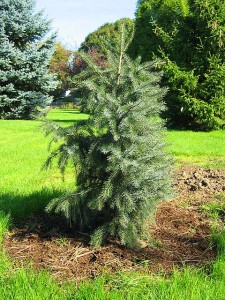 Native to the Siskiyou Mountains in California and Oregon at elevations of 5,000 to 7,000 feet, Brewer's Spruce is found only in a few small groves. Pendulous branchlets hang vercially 7-8 feet or more, creating a graceful curtain. This species was selected as a replacement from the original planting list.
Native to the Siskiyou Mountains in California and Oregon at elevations of 5,000 to 7,000 feet, Brewer's Spruce is found only in a few small groves. Pendulous branchlets hang vercially 7-8 feet or more, creating a graceful curtain. This species was selected as a replacement from the original planting list.
View tree page and map.Colorado Spruce
Scientific name: Picea pungens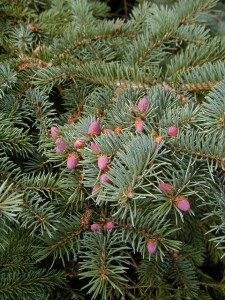
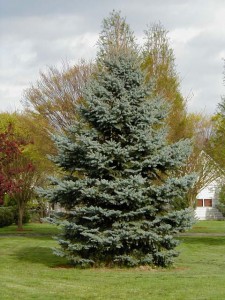 These trees grow to 150 feet and are pyramidal at maturity. They are gray-green or blue-green, depending on the cultivar, of which there are many. It is a favorite front lawn tree in Portland neighborhoods.
These trees grow to 150 feet and are pyramidal at maturity. They are gray-green or blue-green, depending on the cultivar, of which there are many. It is a favorite front lawn tree in Portland neighborhoods.
View tree page and map.Fat Albert
Scientific name: Picea pungens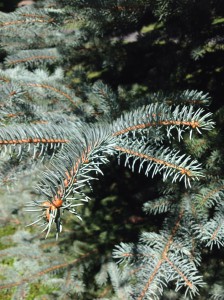
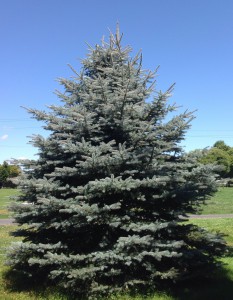 Hey hey hey! A cultivar from Colorado Blue spruce, Fat Albert has a dense pyramid with blue needle color, and is considered a semi-dwarf, with a slow growth to fifteen feet.
Hey hey hey! A cultivar from Colorado Blue spruce, Fat Albert has a dense pyramid with blue needle color, and is considered a semi-dwarf, with a slow growth to fifteen feet.
View tree page and map.Norway Spruce
Scientific name: Picea abies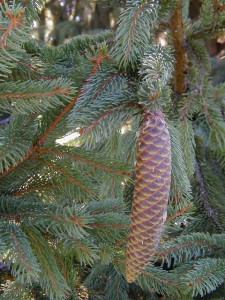
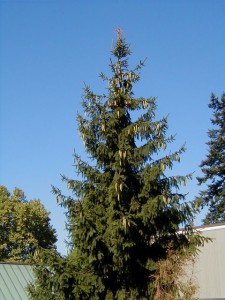 This tree is native to northern and central Europe. Often employed as a windbreak, it withstands both cold and wind very well. The tree is large and produces 8 inch long cones. There are many cultivars of this species of varying appearance. The length of the cones is the best way to identify it from other spruces.
This tree is native to northern and central Europe. Often employed as a windbreak, it withstands both cold and wind very well. The tree is large and produces 8 inch long cones. There are many cultivars of this species of varying appearance. The length of the cones is the best way to identify it from other spruces.
View tree page and map.Serbian Spruce
Scientific name: Picea omorika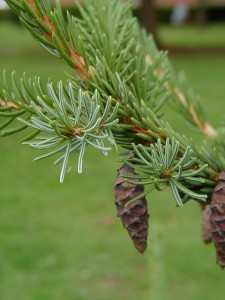
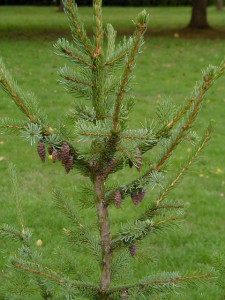 Native to the Balkans, it is rare to find this tree, even in its native habitat. It is a graceful, beautiful spruce with a narrow but pyramidal growth pattern.
Native to the Balkans, it is rare to find this tree, even in its native habitat. It is a graceful, beautiful spruce with a narrow but pyramidal growth pattern.
View tree page and map.Sitka Spruce
Scientific name: Picea sitchensis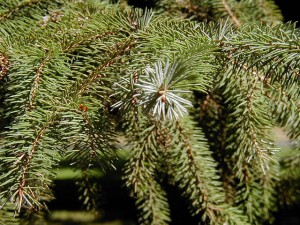 Native to the Northwest, the Sitka Spruce is the largest of the spruce family and a fast grower. Its needles are very sharp and stiff, and its branches are long, growing from well down on the trunk, with an upward sweep at the end. The largest known Sitka Spruce in the lower 48 is found near Seaside, Oregon. Native Americans used this spruce to make baskets, rainhats, rope, tea, and chewing gum. We use it today for ladders, doors, oars, scaffolding, bleachers, boat masts, and musical instruments such as violins.
Native to the Northwest, the Sitka Spruce is the largest of the spruce family and a fast grower. Its needles are very sharp and stiff, and its branches are long, growing from well down on the trunk, with an upward sweep at the end. The largest known Sitka Spruce in the lower 48 is found near Seaside, Oregon. Native Americans used this spruce to make baskets, rainhats, rope, tea, and chewing gum. We use it today for ladders, doors, oars, scaffolding, bleachers, boat masts, and musical instruments such as violins.
View tree page and map.